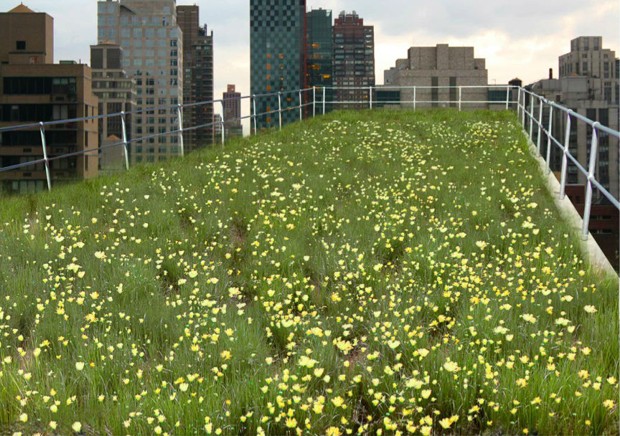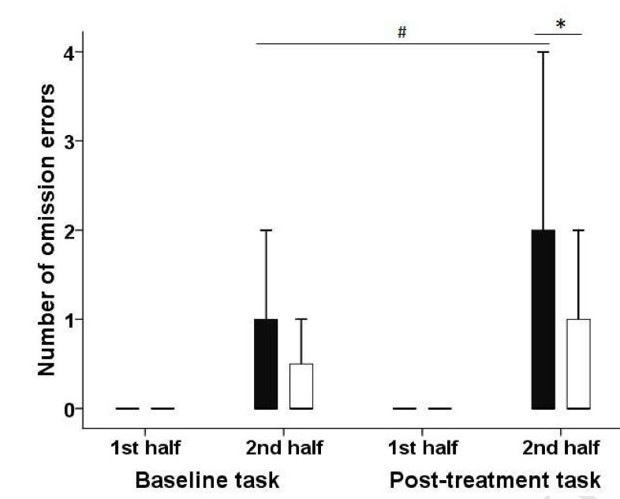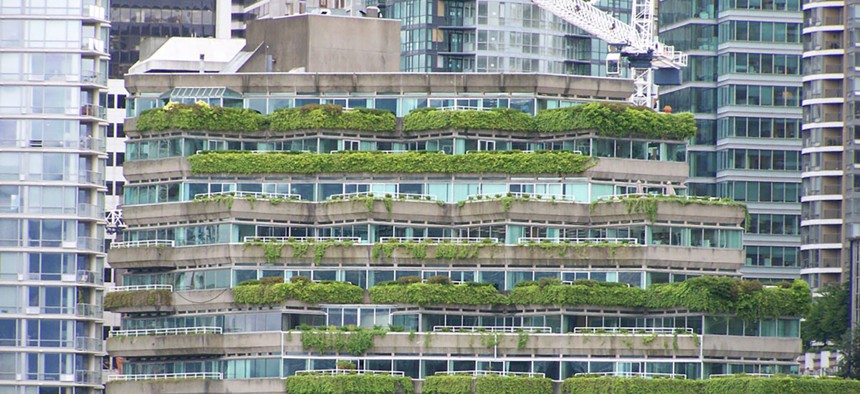How a Quick Glimpse of Nature Can Make You More Productive
Green roofs are great for the environment. Turns out they're great for tired workers, too.
A nice walk through a city park can do wonders for a work-weary brain, reducing mental fatigue and improving attention. But if you're trapped on the high floors of an office tower all day, you can't exactly break for a long stroll and a picnic. Well, fear not. If you have a view of a nearby green space, like say a green roof, and even just a minute to spare, you can reap some of the same refreshing benefits of urban nature.
That's the upshot of a new paper from an Australia-based research team set for publication in the Journal of Environmental Psychology. Their work has found that even taking just 40 seconds to focus on a view of nature can boost "multiple networks of attention"—sharpening your mind to handle the next task dealt by the work day. They call it a "micro-break," and it turns out your brain loves it:
Our results have particular implications for the workplace where sustained attention is vital for performance. They provide a preliminary indication that micro-break views of a green roof could help employees top-up their attention resources as they become depleted in the workplace.
What They Did
For the study, the researchers recruited 150 participants and gave them a "sustained attention task" that's been shown both to require focus and to drain the brain. The task works like this: participants watched two series of 108 digits flash on a screen, and had to press a key after each one—unless it was a "3." After the first series, the participants got a 40-second break, during which some of them looked at a simulated view of a concrete roof …

while others saw a green roof resembling a "flowering meadow":

The researchers then gathered some relevant measures on the task—chiefly, response consistency and error rate—to see whether the micro-break view impacted performance. Spoiler alert: it did.
What They Found
During the first series, which established a baseline, study participants in both groups performed about the same on the attention task. But those who spent their micro-break looking at the green roof demonstrated a "more consistent pattern of responding, suggesting higher sustained attention" their second time through. Compared with the concrete group, the nature group showed less variability in terms of their response patterns on both a gradual and moment-to-moment basis.
In other words, the nature group handled the second task series more closely to how it handled the first—a sign that their flagging attention had been somewhat refreshed by the glimpse of greenery. More technically, the researchers believe that outcome shows a boost to "sub-cortical arousal and cortical attention control."
Study participants who viewed the simulated meadow during their micro-break also made fewer omission errors on their second pass. For this attention task, an omission error occurred if a study participant didn't press a key when the on-screen digit was something other than a "3." Immediately after the break both groups made about the same amount of mistakes, but as the second series progressed, those in the concrete group made significantly more.
What They Charted

What It Means
The digit task might take a little out of us, but it's not exactly deadline writing or floor trading or legal reading in terms of mental energy. How much a quick view of nature would help in those settings, especially against the other distractions of a modern workplace, remains to be seen.
But the findings certainly fit with all that social science has found in recent years about the restorative power of nature. Whether it's a walk through a park, a stand of trees out the window, or a mere desk plant, natural views give the working brain a breather—to varying degrees—by engaging our involuntary attention centers. The new conclusion that greenery might work its magic in mere minutes is an especially intriguing prospect in a fast-paced work world. And if green roof simulations were replaced with the real thing, the performance outcomes in the current study might even have been stronger.
The work also helps build the economic case for green roofs. If the environmental benefits aren't incentive enough to make them a standard part of development efforts, perhaps greater business productivity is.
(Image via Flickr user NNECAPA Photo Library)
NEXT STORY: 5 Productivity Secrets Your Boss Won't Tell You



